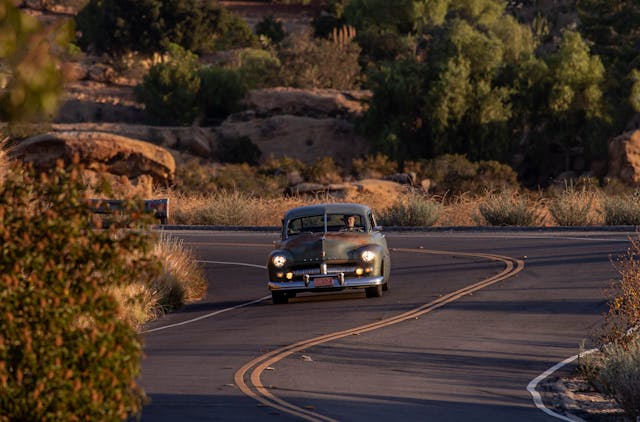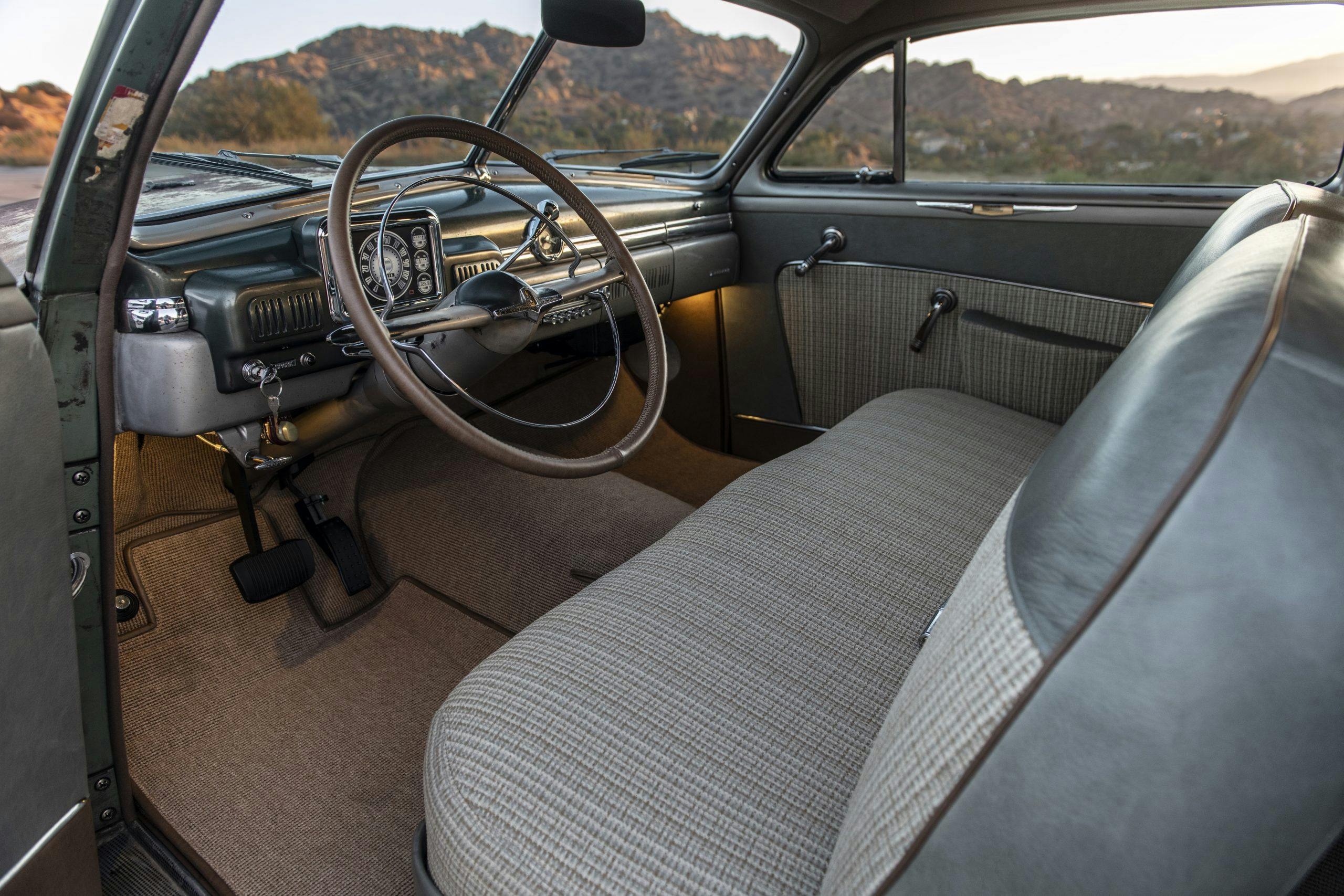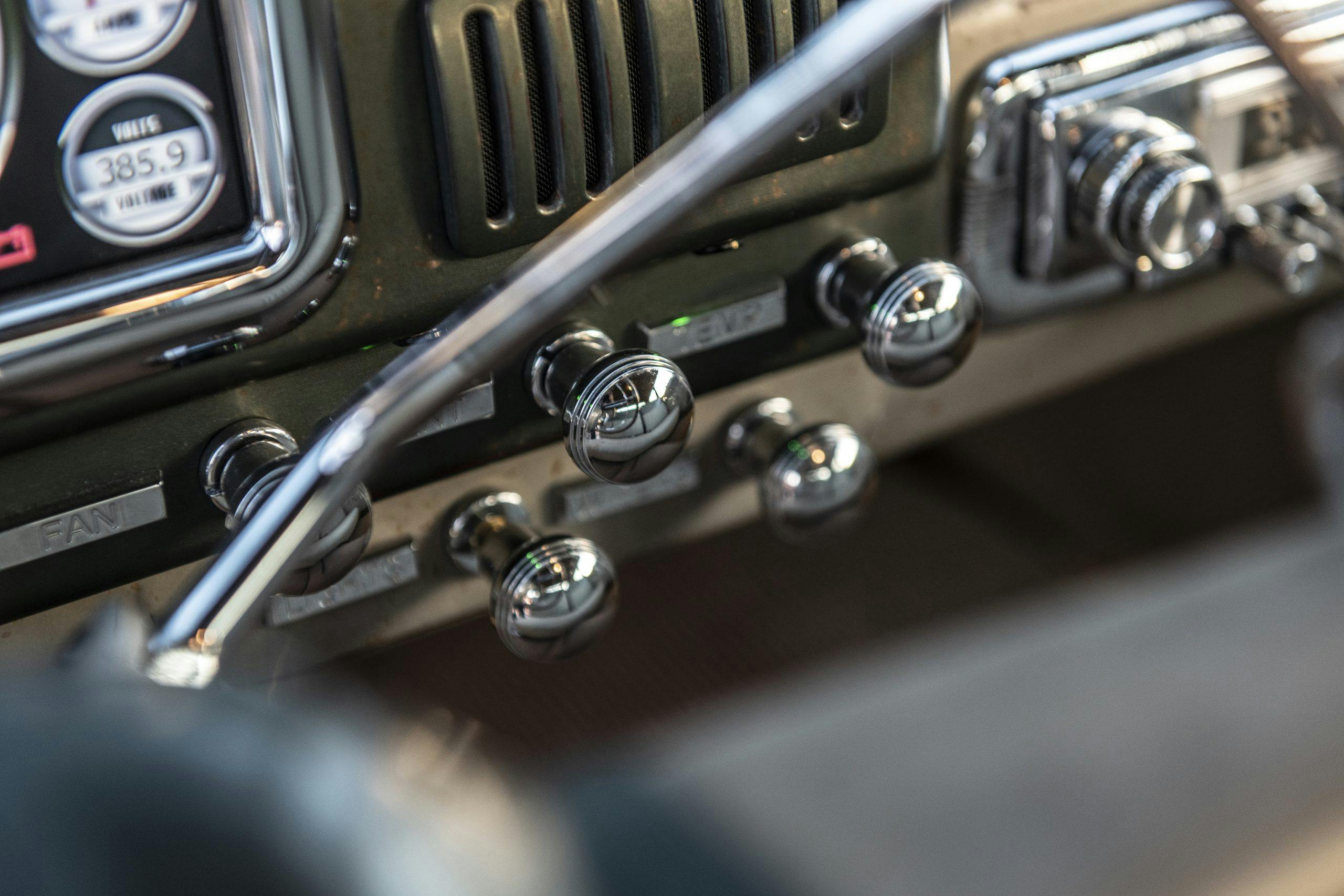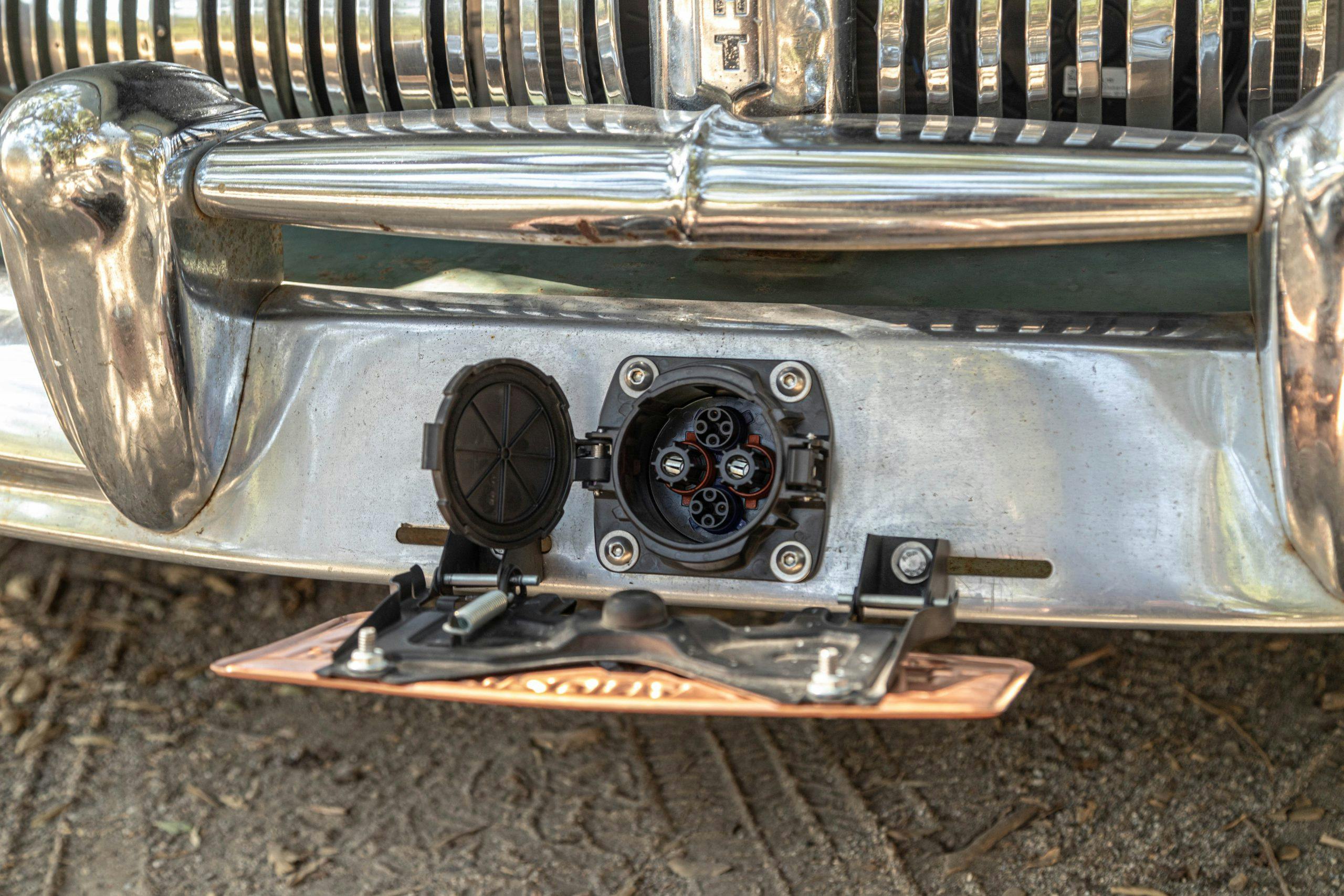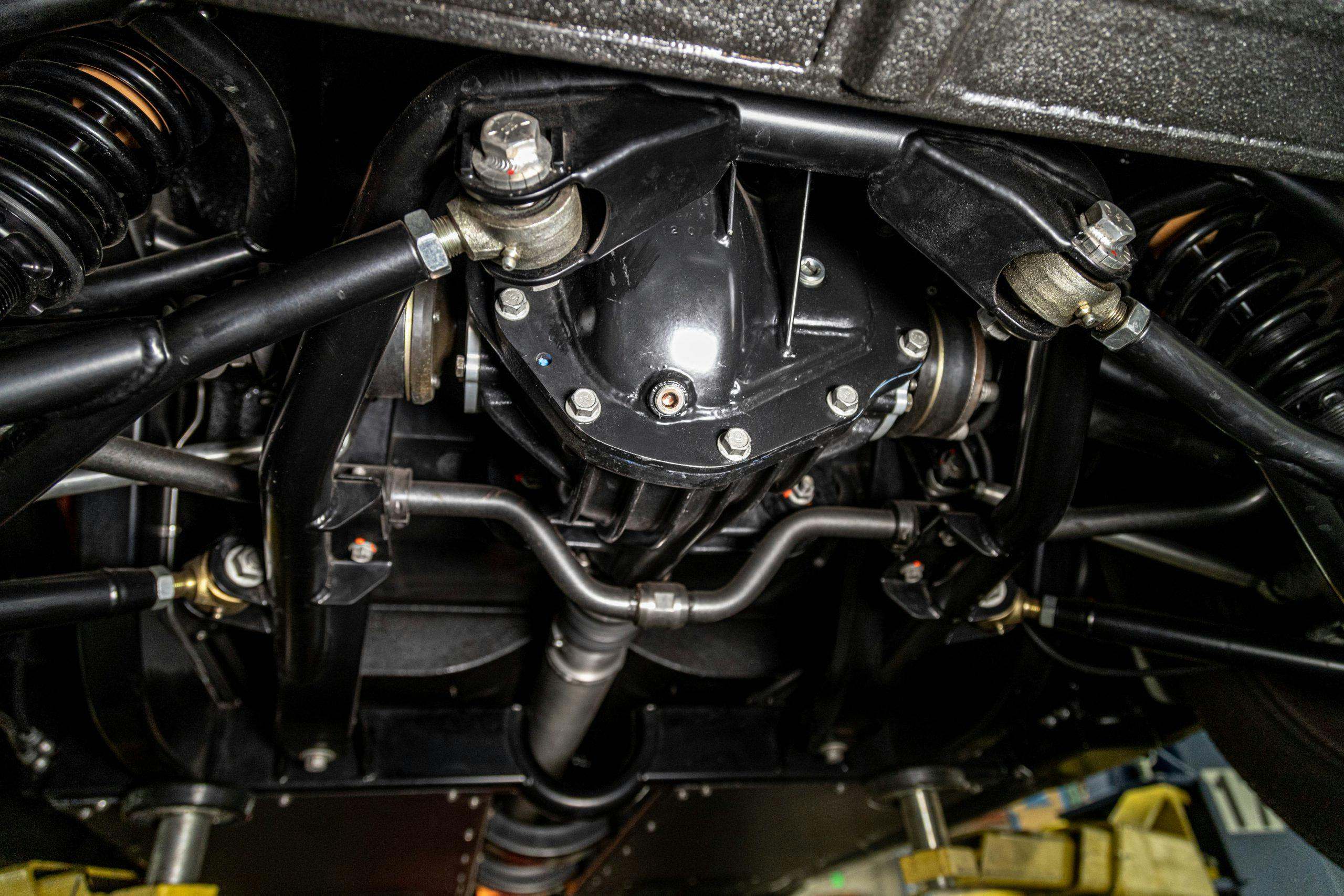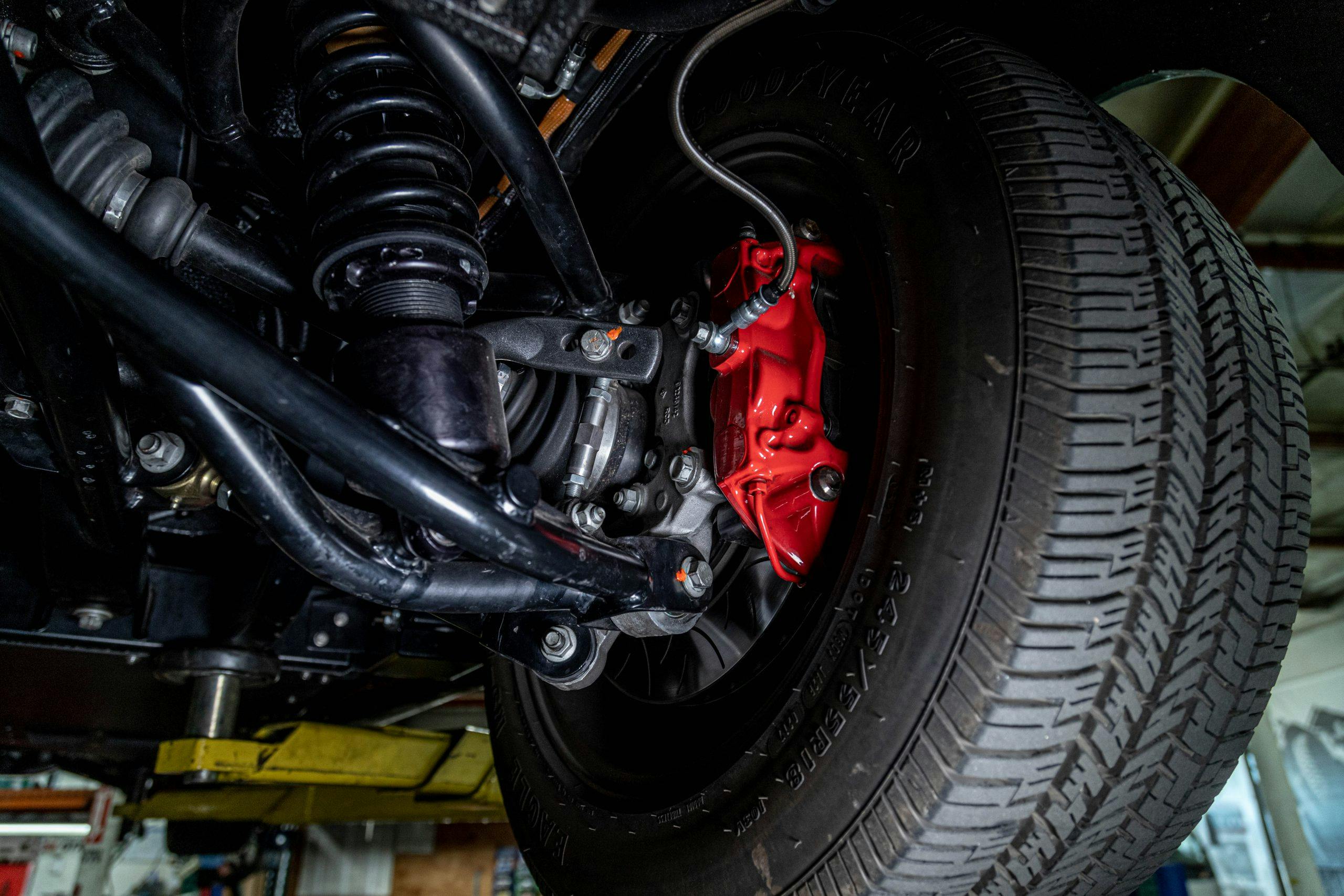Driving Icon’s electric 1949 Mercury sleeper sled
We first spotted Icon’s electric-powered 1949 Mercury at the 2018 SEMA show, where its pioneering construction drew the eye of editor-at-large Aaron Robinson. The car, wearing its original weathered paint on the exterior, was fully transformed underneath. A new chassis, a new floorpan, Tesla batteries, and a pair of 200-hp electric motors were all hiding underneath the endearing patina. The whole process was a big learning experience for Jonathan Ward, Icon’s founder and owner. He recently invited us to the company’s San Fernando Valley facility to put a few miles on the electric-powered lead lithium-ion sled to get a feel for the company’s still-evolving first effort into electrification.

Icon has built a restomod business in part by mastering the Derelict: a package combining sophisticated performance inside a well-burnished wrapper. The company’s LS3-powered 1948 Chevrolet Thriftmaster is one weather-beaten example, as well as the burnished vintage Bronco with Coyote guts.
The Merc’s entire exterior has been maintained, which means it still looks like an old American workhorse on the outside. Its batteries, 85kWh worth, are from a Tesla, but they’ve been positioned throughout the car to maximize interior space. Some of the batteries are mounted in aluminum racks under the hood, in a V-configuration, with a Rinehart Motion Systems motor controller atop each bank. Additional battery packs are located above the rear axle, just behind the rear seat. The placement keeps weight balanced and still rather low. Speaking of low, the top isn’t chopped, although the beltline on these cars is tall enough that is almost seems that it is. With the engine bay full of batteries and motor controllers, the AM Racing motors were mounted where the transmission used to reside. Twin motors team up to provide 400 hp and 470 lb-ft of torque, far more than any Merc flathead could ever hope to muster.
Ward told us that the Mercury’s original switches came in a variety of shapes and sizes, so the design team choose one that they really liked and used it to model additional knobs, which were necessary and machined out of aluminum. Even the LED interior lights and digital dash were given the proper warm tones to blend into the well-worn aesthetic of the car. The label for the ignition switch has been replaced by one that reads “Spark”. To start the car, the key must be turned not just to the on position, but beyond, just as if it were engaging a starter.
Plenty of time on this build was spent creating a unified feel throughout the vehicle, which involved quite a lot of attention to the details. “I had the leather made by my friend’s tannery to reference the body colors.” Ward told us. The body wears not just its sage green, but the red-orange rust that came from sitting for decades. The Mercury was sold new in Modesto, California, and moved to Long Beach where it was owned by a longshoreman, and somehow it survived the seaside life reasonably unscathed.
Icon again teamed up with Art Morrison for the custom chassis, which uses rear suspension geometry borrowed from a modern Camaro SS. With its full chassis and abundance of batteries, the Merc tips the scales at around 4300 pounds, which makes it feel a bit heavier than the last of the brand’s Panther cars but comparable to a late-model Charger V-8. Considering it has such a smooth power delivery with torque available all the time, its performance might be comparable to a 392 Charger, if not its soundtrack.
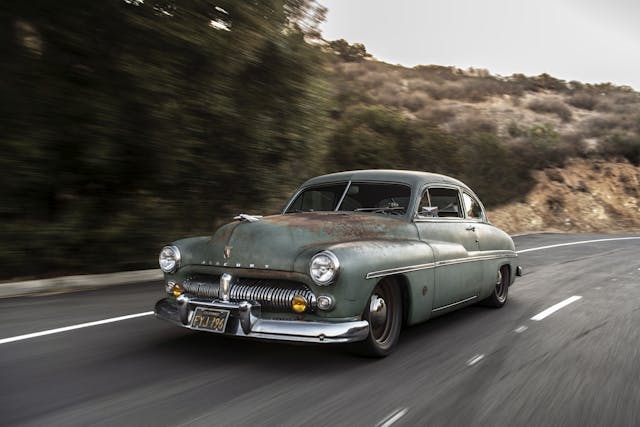
“The hard part is very low throttle, getting it smooth,” Ward tells us. Indeed, there is some pulsation at a very gentle throttle, which is noticeable because the rest of the car is so quiet. Chalk that up to a thorough application of Dynamat and new welting that surrounds the doors. There may have been some moans and groans left in the original doors, but not anymore. Once the car gets past walking pace, those pulsations are gone and the eerily silent car smoothly accelerates. At cruising speeds, there’s no wind buffeting and the Goodyear Eagle RS-A tires, 235/50R18 in front and 245/55R18 in back, are nearly silent as well. Roll onto the throttle and the tires grab, the car surging forward confidently with lots of grip in the corners thanks to its modern suspension geometry. Ward joked that rear-seat passengers would have a hard time keeping planted on the rear bench considering the lateral acceleration. Despite the disconnect between its weathered facade and its sporty underpinnings, it’s easy to adapt to the car. The controllers have been programmed to apply power very linearly, making everything quite predictable. The characteristic burble from a Flathead is gone, although the smooth power delivery is welcome in the big cruiser. It’s quicker, it’s quieter, and it rides quite nicely.
The only aspect of driving that made the Merc feel noticeably different from any other electric car was the electric-over-hydraulic steering. Because there’s no constantly running engine to provide hydraulic pressure, Icon used the electric hydraulic system from a Toyota MR2 to drive its custom rack and pinion. With the Merc’s big steering wheel it doesn’t take much steering effort to turn, but we noticed it does need to be unwound rather than self-centering, as it would in a car with plenty of caster normally would. It’s something that fits the cruising look of the car but perhaps not its sporting potential.
Ward said that this build provided a lot of challenges, partly because battery and motor technology is evolving so quickly. Pioneers in the industry have made a lot of progress and the aftermarket is beginning to fill in gaps with products and knowledge to help DIYers.
Don’t fret, piston lovers: Icon’s LS3 and Coyote-powered projects aren’t going anywhere anytime soon. But thanks to this Mercury, Icon now has a new philosophy for building its cars modularly. Expect the company to put its hard-earned experience to use in its upcoming EV builds.
Check out the Hagerty Media homepage so you don’t miss a single story, or better yet, bookmark it.
